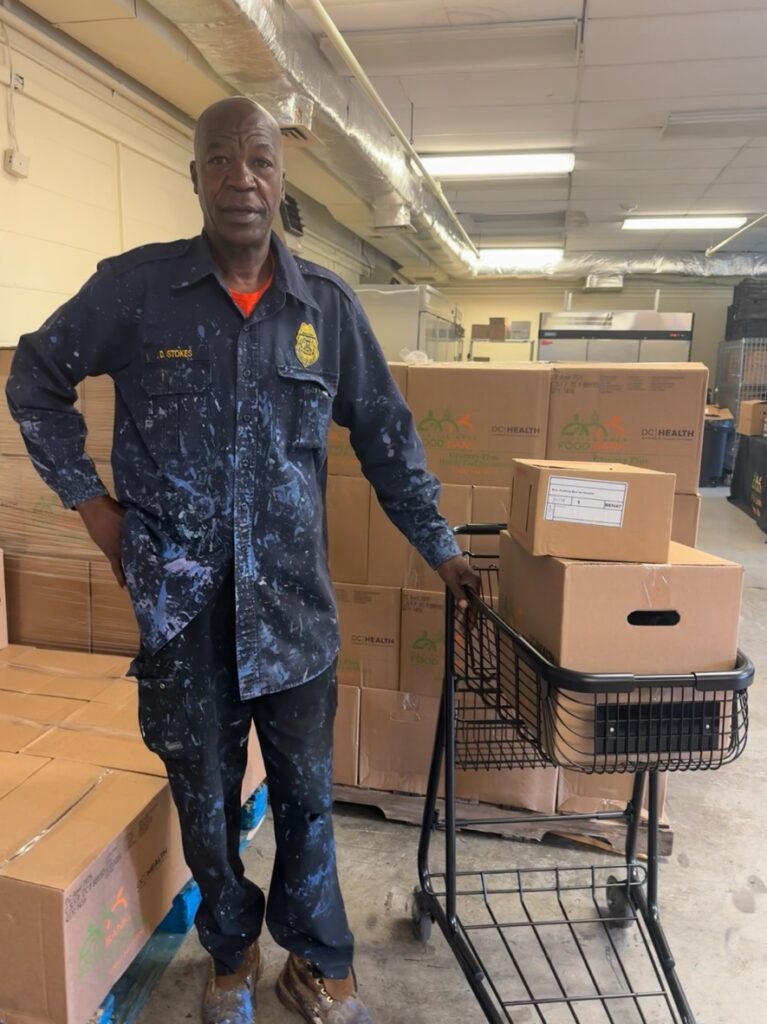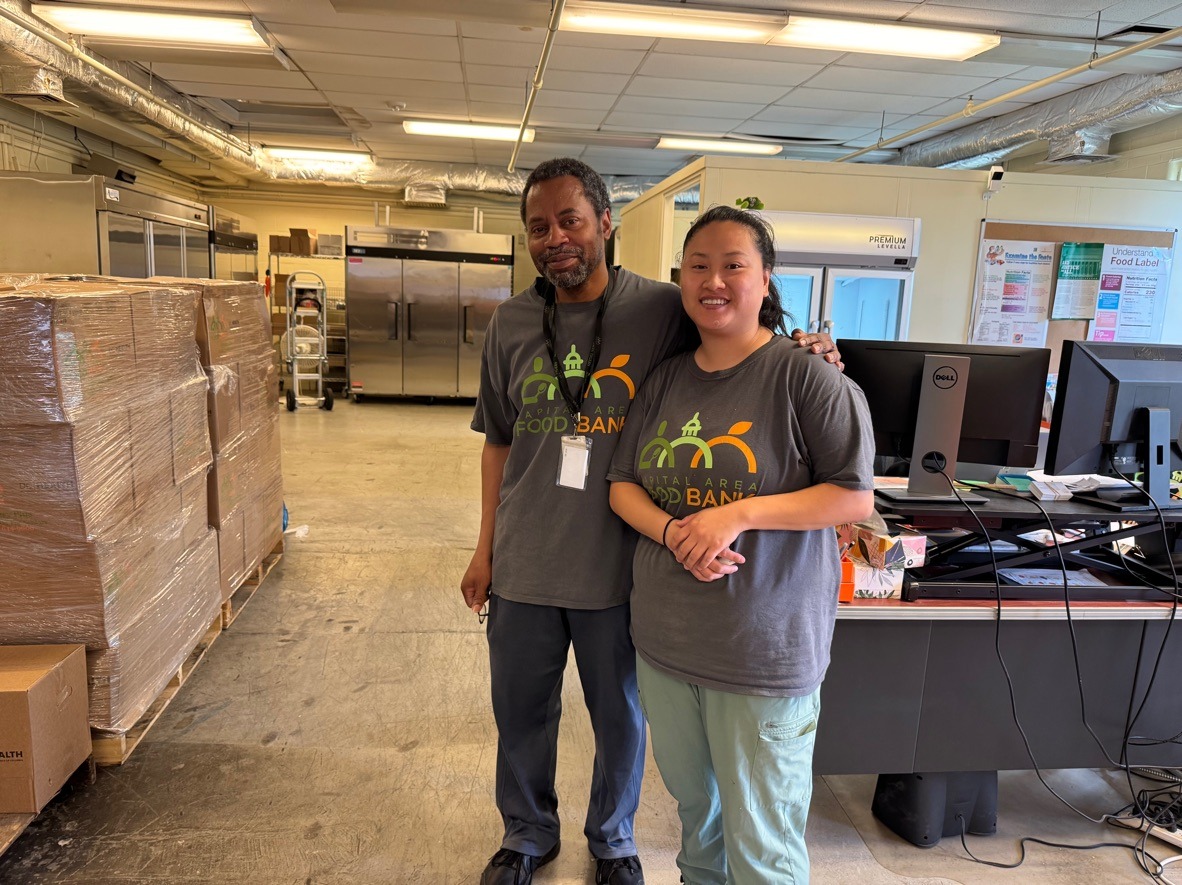On an overcast morning in early May, the East Capitol Walk-In Center in Southeast D.C. was alive with movement and conversation. Seniors steadily filed in to pick up their monthly food boxes—part of the Commodity Supplemental Food Program (CSFP), a U.S. Department of Agriculture initiative designed to provide nutritious food to income-eligible seniors over the age of 60.

For seniors like Homer Kelly, visiting the center to pick up groceries has become a critical stop in their monthly routine.
Homer, a retired Marine sergeant who now picks up odd jobs doing handyman work, described the food boxes as a source of stability. “It means you can make it through the month. And it means more than that. It means that I don’t have to worry, especially in the winter months. I know I have something coming from the food bank, and that means a lot, because I can relax.”
The East Capitol Walk-In Center is operated by the food bank, and one of several sites across the region that serve a total of 7,100 seniors each month. That includes over 5,600 in D.C. alone, where seniors experience some of highest rates of food insecurity in the country. At the center, CAFB staffers distribute boxes filled with shelf-stable foods like canned chicken, unsweetened applesauce, low-fat milk, and whole grains.
One message came through clearly from those receiving food at the recent distribution: this support is essential. Older adults often are on limited or fixed incomes, making it difficult to afford food while also covering other essentials like rent, utilities, and medications. Health issues and mobility challenges can make cooking or even getting to the grocery store harder.
Sharita Slayton just turned 60 this year and began receiving CSFP. She emphasized how smooth the experience is at the East Capitol site and how the variety of foods in the boxes provide balanced meals. “It’s very convenient to get in and out. They’re very helpful, and it’s a fast process. Last month, it was farina in the boxes. That’s breakfast, right? Then you have your cheese. You have produce, and you can do the beans and rice that make a whole meal.”
For Yvonne Golden, who manages chronic illness through diet, the food boxes help her stay on track without stretching her limited budget. “The produce in the grocery stores, it’s just so expensive,” she said. “Being able to walk here and get food that fits my diet makes a big difference.”
Beyond the boxes, there’s a strong sense of community at the center. CAFB staff greet regulars by name, ask about their lives, and create a welcoming environment. There’s even a sharing table, where neighbors can leave items they won’t use and pick up ones they will. “A simple produce box can help someone make something to bring to a friend so they don’t come empty-handed,” said Lily Warne, a customer service coordinator for CAFB. “It might not be a full month of groceries, but it helps bridge the gap—and that means a lot when you’re living on a fixed income.”
For the seniors who rely on this food, the East Capitol Walk-In Center isn’t just a place to pick up groceries. It’s a source of connection and dignity, one monthly visit at a time.


